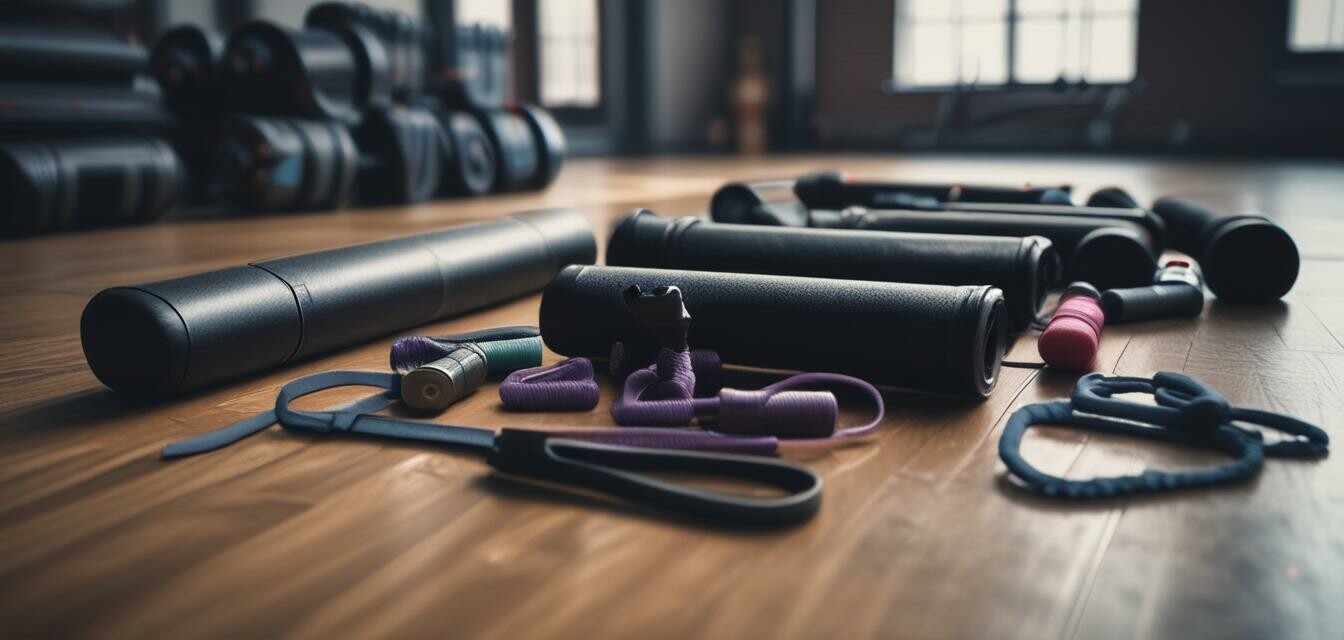
Guide to Choosing Recovery Equipment
Key Takeaways
- Recovery equipment helps in muscle recovery post-workout.
- Choose equipment based on your specific recovery needs.
- Popular tools include foam rollers, massage guns, and compression gear.
- Quality matters – invest in reputable brands.
- Understand how to incorporate recovery equipment into your routine effectively.
In the world of fitness, recovery is as critical as the workout itself. Whether you're a seasoned athlete or a casual gym-goer, having the right recovery equipment can significantly enhance your muscle recovery process and overall health. This guide will provide you with all the essential information to make informed choices when selecting recovery equipment.
Understanding Recovery Equipment
Recovery equipment refers to tools and devices that assist in muscle recovery post-exercise. Using the right equipment can help in reducing soreness, enhancing flexibility, and improving overall muscle health. Here are some common types of recovery equipment:
- Foam Rollers
- Massage Guns
- Resistance Bands
- Compression Gear
- Stretching Equipment
Benefits of Recovery Equipment
Before jumping into the selection process, it’s crucial to understand the benefits of recovery equipment:
| Benefit | Description |
|---|---|
| Improved Circulation | Enhances blood flow, aiding in muscle recovery. |
| Reduced Muscle Soreness | Helps relieve muscle tightness and soreness. |
| Injury Prevention | Promotes mobility and flexibility, reducing injury risks. |
| Enhanced Performance | Regular use can lead to improved athletic performance. |
Choosing the Right Recovery Equipment
When selecting recovery equipment, consider the following factors:
1. Identify your needs
Before investing in any recovery tools, it’s vital to identify your specific recovery needs. Are you prone to muscle soreness? Do you need help with flexibility? Understanding your needs will guide your purchasing decision.
2. Research Different Tools
Not all recovery equipment is created equal. Here’s a comparison of popular recovery tools:
| Type of Equipment | Usage | Benefits |
|---|---|---|
| Foam Roller | Self-myofascial release | Improves flexibility, reduces muscle tightness. |
| Massage Gun | Percussive therapy | Targets specific muscle groups for deep tissue relief. |
| Resistance Bands | Stretching and strengthening | Improves flexibility and muscle recovery. |
| Compression Gear | Wearable garments | Reduces swelling and enhances blood flow. |
| Stretching Equipment | Assists in flexibility | Promotes muscle elasticity and mobility. |
3. Prioritize Quality
Investing in quality recovery equipment is essential. Look for reputable brands known for durability and performance. Check user reviews and ratings before making a purchase.
4. Budget Considerations
Recovery equipment can vary significantly in price. Set a budget but remember that investing in good-quality equipment can save you money in the long run by preventing injuries.
How to Incorporate Recovery Equipment into Your Routine
Integrating recovery equipment into your fitness regime is crucial for maximized benefits. Here are some tips:
- Start with a warm-up before using recovery tools.
- Use foam rollers and massage guns for 10-15 minutes post-workout.
- Incorporate stretching sessions a few times a week.
- Wear compression gear during exercise or while resting.
- Listen to your body; adapt your routine as needed.
Tips for Beginners
- Always warm-up before using recovery equipment.
- Stay hydrated to aid muscle recovery.
- Consistency is key – make recovery a regular part of your workout routine.
- Seek advice or tutorials on the proper use of equipment.
- Track your progress and adjust your equipment as needed.
Conclusion
Choosing the right recovery equipment is vital for anyone looking to enhance their fitness journey. By understanding your needs, researching various tools, and prioritizing quality, you can make informed choices that support your muscle recovery. Don’t forget to incorporate these tools into your routine effectively, ensuring a balanced approach to both exercise and recovery.
Pros
- Promotes efficient muscle recovery.
- Improves overall physical performance.
- Variety of tools to cater to different needs.
- Can prevent injuries and enhance mobility.
- Accessible and relatively easy to use.
Cons
- Initial investment may be high for quality equipment.
- Understanding proper usage is vital to avoid injuries.
- Some tools may require space for use and storage.
- May take time to see noticeable benefits.
For more insights on other fitness essentials, visit our Home Gym Essentials page. Looking for outdoor options? Check out our Outdoor Fitness Gear. Ready to take a smart approach? Explore Smart Fitness Gadgets. Interested in strength training? Discover our Strength Training Equipment.